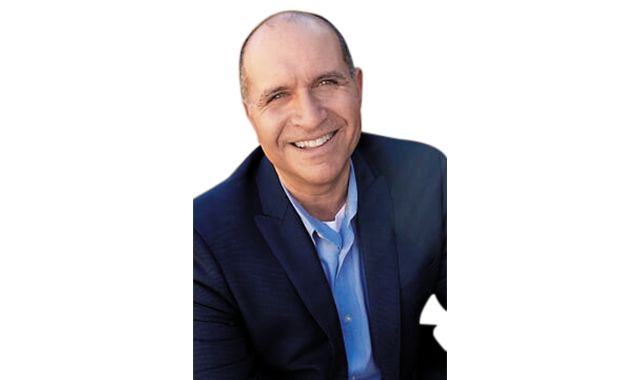Dietary Supplements Need Evidence and Evaluation
Some patients view supplements as more convienent and affordable than medical treatment.

Cathy Rosenbaum, PharmD, MBA, CHC

John Ayo

Andrew Freeman, MD, FACC, FACP

Dietary supplement use continues to grow in popularity. In 2017, 76% of U.S. adults reportedly used dietary supplements-a 5% increase from the previous year and an all-time high, according to a survey conducted by the Council for Responsible Nutrition. WHO estimates that 80% of the global population uses some form of herbal medicine. Domestically, the nutraceutical industry has also enjoyed a surge in popularity, partly spawned by growing public discontent with traditional Western medicine. In addition, some patients view OTC products and dietary supplements as a more convenient and/or affordable alternative to seeking medical treatment or as a suitable treatment for minor conditions.
The uptrend in dietary supplement use creates unprecedented opportunities for pharmacists working in many practice settings where they can alter the patient experience by ensuring appropriate use of these products. While pharmacy students receive education on OTC products, training varies greatly among schools of pharmacy, and pharmacists might lack sufficient knowledge about OTCs.
OTC Education Is Complicated
The Accreditation Council for Pharmacy Education (ACPE) requires that pharmacy students receive training in what it refers to as “natural products and alternative and complementary therapies.” ACPE defines this training as the “evidence-based evaluation of the therapeutic value, safety, and regulation of pharmacologically active natural products and dietary supplements,” while also acknowledging cultural practices of providers and their patients to encourage healthy habits and practice.
Read More: Top 5 Problem Dietary Supplements
While the ACPE mandates that pharmacy schools provide education on OTC products, it does not require a certain number of hours for OTC education. The amount of nonprescription dietary supplement education varies tremendously between schools and remains a difficult undertaking given the myriad of dietary supplements on the market. “There are an estimated 70,000 supplements worldwide from which consumers may choose, so it’s hard for healthcare professionals to figure out which group of supplements to focus on for clinical indication, side effects, and place in therapy,” says Cathy Rosenbaum, PharmD, MBA, CHC, a holistic clinical pharmacist and founder/CEO of Rx Integrative Solutions in Blue Ash, OH. “There’s a vast difference among clinical research related to American, Chinese, and Ayurvedic herbs, in addition to homeopathy and other nonvitamin supplements that are used for condition management or wellness/prevention.”
Challenges with Evaluating Quality
Traditional Indian medicine, or Ayurveda, and traditional Chinese medicine are among the oldest forms of medicine, and their popularity has transcended their Asian origins, with global market growth predicted at a rate of 5% to 10% annually, according to the peer-review journal “Evidence-Based Complementary and Alternative Medicine.”
Recognizing the market potential, the FDA passed the Dietary Supplement Health and Education Act of 1994 (DSHEA), designed to prevent mislabeling and misbranding, and published regulatory documentation guidance in efforts to address quality challenges stemming from the use of herbal medicine. While DSHEA expanded the market of dietary supplements by including vitamins in its classification, the FDA does not evaluate these nonprescription products for safety, but charges the manufacturers with ensuring the products are safe.
“From a practical perspective, dietary supplements are considered safe until they’re proven unsafe under DSHEA, which is just the reverse with prescription medications,” Rosenbaum cautions. Due to potential quality/safety risks with supplements, “buyer, pharmacist, physician, and healthcare provider beware before purchasing or recommending supplements for yourself or your patients,” she says.
Trending: Gottlieb Resigns from FDA, Focused on Generics and e-Cigarettes
John Ayo, a naturopath and CEO of Travel Balance, emphasizes the importance of healthcare professionals exercising their due diligence when reviewing product quality-especially when evaluating the potency and purity of herbal products. “Selecting quality herbal products can be tricky because you have to consider many factors, including whether the product has been standardized, how it was processed, the growing conditions, and when the plant was harvested,” Ayo says.
To help overcome these hurdles, Rosenbaum recommends pharmacists use three steps to ensure the potency and purity of a product:
1. Determine if the product has undergone quality or potency and purity testing by an independent third party. Rosenbaum says the product labels should bear seals from either the United States Pharmacopeia (USP), NSF International, or ConsumerLab.com.
2.Request a quality specification sheet for potency and purity from the manufacturer, called a Certificate of Analysis (CoA). “Most people don’t realize that we as pharmacists have the ability to get a CoA,” says Rosenbaum.
To answer any questions not provided in the CoA, Rosenbaum recommends calling the manufacturer to gather information about its product testing. Ask what testing methods are used, such as chromatography, mass spectrometry, gas chromatography, or titrimetry? What additional levels of testing are done? In early 2018, the NSF International began offering DNA verification of raw ingredients, known as a DNA-authenticated mark, to help reduce concerns regarding fraudulent products infiltrating the market.
3. Review published human clinical studies. For supplement indication, side effects, and drug/supplement interactions for the supplement formulations that have been standardized in the industry.
Check Interactions
“Pharmacists play a tremendous role in helping to communicate when patients are on something that doctors don’t know about,” Andrew Freeman, MD, FACC, FACP, a cardiologist, co-chair of the Nutrition and Lifestyle Workgroup of the American College of Cardiology (ACC) and director of cardiovascular prevention and wellness at National Jewish Health in Denver.
The intimate patient-pharmacist relationship coupled with pharmacists’ educational training empower them to evaluate the potential for herbal-drug and nutrient-drug interactions, but determining interactions is only one part of the puzzle, says Rosenbaum. According to ACPE standards, pharmacists must make prudent recommendations for supplement use based on evidence, which often is not as easy to find or as thorough as that for prescription pharmaceuticals. Because herbal-drug interactions have not been studied as widely as drug-drug interactions, the best available evidence might be a case report.
Rosenbaum points out that pharmacists’ training in evaluating clinical research studies for supplements, the patient’s laboratory results, and recommending dosing adjustments and/or cost-effective alternatives are a value-added professional service. Advice from pharmacists can fill the gap among health food store clerks, nurses, dietitians, chiropractors, and physicians. Pharmacists have another layer of professional responsibility when determining whether supplementation is necessary. For example, patients who take metformin should not take vitamin B12 without having levels of this vitamin tested first. Similarly, CoQ10 supplementation may not be appropriate for every patient taking statins. If a patient has muscle pain while on statin therapy, Rosenbaum recommends evaluating other potential sources of the patient’s pain and/or requesting the primary care physician write an order for a CoQ10 blood level before automatically recommending the supplement.
Related Read: Biosimilar Naming Change Eliminates Potentially High Consumer Costs
Another complication in managing medication-related nutrient deficiencies is the need to evaluate the patient’s diet. “How does the pharmacist know if the patient truly needs CoQ10 supplementation?” Many foods such as broccoli, cauliflower, pork, beef, chicken, strawberries, and peanuts contain CoQ10, he notes.
Rosenbaum offers readers some final advice: “Your recommendations should be understandable, evidence-based, practical, and readily actionable for your patients.”
